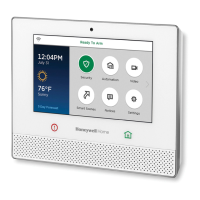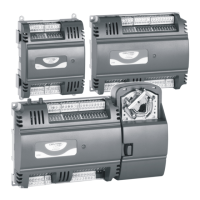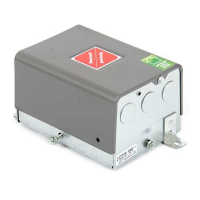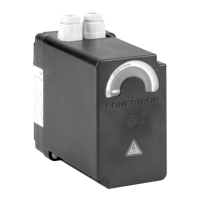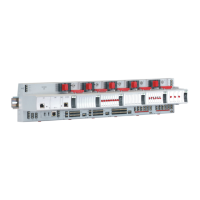8
Security Features
NOTES: • For the Gateway to report alarms over the internet, your Wi-Fi network MUST have
power at all times.
• You must arm your security system in order for it to sound alarms.
Sensors and
Zones
Your system’s sensors are assigned to numbered zones that correspond to areas of
your home. For example, the sensor on an entry/exit door might be assigned to Zone
03, a device in a bedroom to Zone 06, and so on.
When alarms or trouble conditions occur, you can find information about the zone
number and a description of the sensor involved using the MyHome Gateway App.
[
Home > Security > Tools . Master User Code > Events
]
Fire
Protection
Fire protection is always active when the system is operating normally. An alarm
sounds if a fire condition is detected. See the
section for
important information about fire protection, smoke detectors and planning emergency
exit routes.
Carbon
Monoxide
Carbon monoxide (CO) detectors, if installed, are always active and sound an alarm if a
carbon monoxide condition is detected. See the
section for more
information.
Burglary
Protection
Gateway provides HOME and AWAY burglary protection.
HOME mode protects windows and exterior doors, allowing you to move around inside
your home without setting off an alarm. (This mode may be referred to As STAY mode
in Total Connect.)
AWAY mode protects the entire premises, including interior motion detectors, if
present.
Both modes offer an entry delay period that allows you to reenter the home without
setting off an alarm. For long periods such as vacations, the entry delay can be turned
off while arming the system.
Gateway also allows you to
selected sensors before arming the system.
The system also features
mode, which can alert you to the opening of protected
doors and windows while the system is disarmed.
Security
(User)
Codes
A user code is required when arming or disarming and for some other functions.
When the system is installed, you are asked to choose a personal 4-digit security code,
known as the “Master User code”.
Other users can be added, typically with less control over the system than the Master
User. See
.
User Code
Error
(Touchpad
Lockout)
The system locks out user code entries for 15 minutes if six invalid codes are attempted
(30 keystrokes without a valid user code detected). Additional code entry attempts will
not be accepted until the lock out period ends.
: The system can be Quick Armed while in Lockout mode, but cannot be
disarmed.
Alarms When there is an Alarm, the system’s sounders turn on: Internal sounders on the
and any smart devices running the
App; also any external
sirens (if used).
The Gateway Touchpad’s status shield and
blink red. If open, the MyHome Gateway
App screen indicates
and shows the zone(s) where the alarm has occurred.
After 15 seconds, the sounder stops temporarily and the system begins voice
announcements of relevant zone information. After the zones are announced, the
system’s sounder resumes sounding. Alarm sounds and voice announcements alternate
until the system is disarmed or until alarm bell timeout occurs.
If the system is connected to central monitoring, an alarm message is sent.
To silence the sounder, disarm the system
. The zone(s) causing the alarm remain
displayed on the MyHome Gateway App screen, indicating Memory Of Alarm is held in
memory. See
for more about clearing memory of alarm.
Audio Alarm
Verification
Allows your central monitoring station to listen to or talk with individual(s) on the
premises (if programmed to do so).

